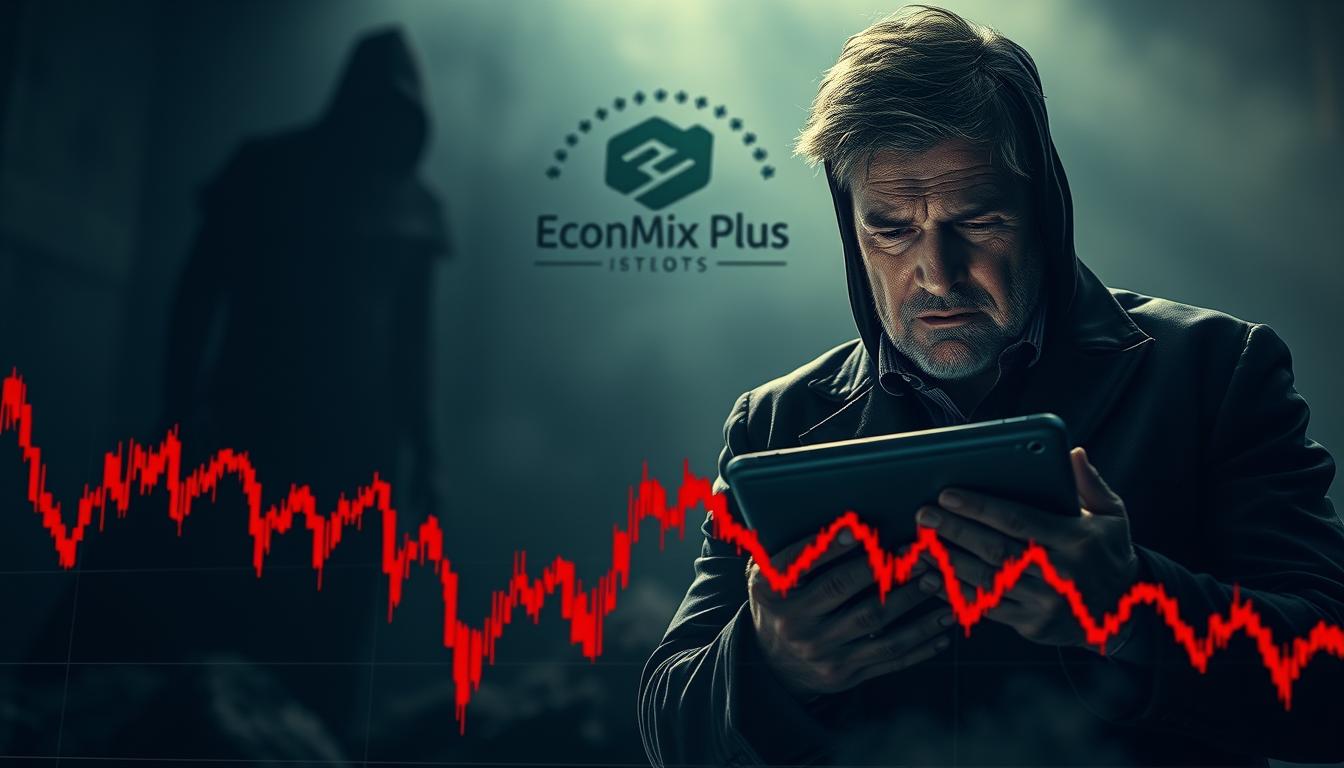Rising inflation has significant effects on consumers, stocks, and the economy. As inflation increases, the purchasing power of money declines. This leads to higher living costs.
The impact of inflation on stock prices is complex. Historically, value stocks have outperformed during high inflation periods. On the other hand, growth stocks tend to excel in low inflation environments.
The relationship between inflation and stock prices is influenced by several factors. These include market volatility and economic growth. Grasping this dynamic is essential for investors aiming to navigate the market’s complexities.
Key Takeaways
- Rising inflation can negatively affect stock prices.
- Value stocks tend to perform better in high inflation environments.
- Growth stocks outperform when inflation is low.
- Inflation increases market volatility.
- Economic growth is closely tied to inflation rates.
Understanding Inflation and Stock Market Dynamics
The stock market and inflation are closely tied, with monetary policy playing a key role. To grasp this complex relationship, it’s vital to understand inflation’s basics and its impact on the stock market.
Defining Inflation in Economic Terms
Inflation is the rate at which prices for goods and services rise, reducing purchasing power. Central banks, like the Federal Reserve in the United States, aim to control inflation and prevent deflation. This goal helps maintain economic stability.
The Relationship Between Monetary Policy and Markets
Monetary policy, managed by central banks, is critical in fighting inflation. By adjusting interest rates and regulating the money supply, central banks can shape inflation rates. This, in turn, affects the stock market’s performance.
Key Inflation Indicators Investors Should Monitor
Investors track several key indicators to assess inflationary pressures. These include:
- Consumer Price Index (CPI)
- Producer Price Index (PPI)
- Personal Consumption Expenditures (PCE)
Consumer Price Index (CPI) and Producer Price Index (PPI)
The CPI measures price changes in a basket of goods and services for households. The PPI tracks the average price changes received by domestic producers for their output.
Personal Consumption Expenditures (PCE)
The PCE price index captures the prices of goods and services for households. It’s seen as a detailed indicator of inflation.
| Indicator | Description | Impact on Inflation Analysis |
|---|---|---|
| CPI | Measures consumer price changes | Reflects household inflation experience |
| PPI | Tracks producer price changes | Early indicator of inflationary pressures |
| PCE | Comprehensive measure of consumption expenditures | Preferred inflation gauge by the Federal Reserve |
What is the Impact of Inflation on Stock Prices
Inflation’s influence on stock prices is complex, tied to its effects on corporate earnings, interest rates, and consumer behavior. It’s vital for investors to grasp these dynamics, as inflation’s impact on the stock market can be profound.
The Direct Effects of Rising Prices on Corporate Earnings
Inflation’s rise can directly hit corporate earnings by boosting the cost of raw materials, labor, and other inputs. Companies face a challenge in keeping profit margins if they can’t pass these increased costs to consumers. This can result in lower earnings and, ultimately, a drop in stock prices.
Interest Rate Adjustments and Equity Valuations
Central banks often tweak interest rates in response to inflation. Higher rates can alter equity valuations by changing the discount rate in valuation models. This shift can sway investor sentiment and stock prices.
Discount Rate Effects on Present Value Calculations
A higher discount rate diminishes the present value of future cash flows, making stocks less appealing to investors. This can cause a drop in stock prices as investors reevaluate their investment values.
Price-to-Earnings Ratio Compression
Inflation can also compress price-to-earnings (P/E) ratios. As earnings climb with inflation, if stock prices don’t keep pace, P/E ratios shrink. This compression can make stocks seem less appealing, potentially triggering a sell-off.
Consumer Purchasing Power and Market Sentiment
Inflation erodes consumer purchasing power, potentially reducing demand for goods and services. This decrease in demand can harm corporate earnings and, by extension, stock prices. Investor sentiment is also key, as perceptions of inflation can shape market trends.
| Factor | Impact on Stock Prices | Reason |
|---|---|---|
| Corporate Earnings | Negative | Increased costs, reduced profit margins |
| Interest Rates | Negative | Higher discount rates, reduced present value |
| Consumer Purchasing Power | Negative | Reduced demand, lower sales |
Sector-Specific Responses to Inflationary Pressures
Different sectors of the stock market react to inflation in unique ways, presenting both opportunities and risks. It’s vital for investors to understand these sector-specific responses. This knowledge helps in managing risks and identifying emerging trends.
Defensive Sectors That Traditionally Outperform
Certain sectors show resilience during high inflation periods. These sectors maintain profitability even when costs rise and economic uncertainty grows.
Utilities and Consumer Staples
Utilities and consumer staples are often seen as defensive. They have stable demand, making them less affected by economic changes. Utilities can pass on increased costs to consumers due to regulatory frameworks. Consumer staples provide essential goods, making them less sensitive to economic downturns.
Healthcare and Pharmaceuticals
The healthcare and pharmaceutical sectors are also defensive. They benefit from consistent demand for healthcare services and products. Pharmaceutical companies with robust pipelines and healthcare providers with stable patient bases perform well during inflation.
Growth Stocks vs. Value Stocks During Inflation
Investors must consider the performance of growth stocks versus value stocks during inflation. Value stocks may become more appealing with rising interest rates. They offer lower valuations and higher dividend yields. On the other hand, growth stocks face challenges due to increased capital costs from higher interest rates.
Commodities and Real Assets as Inflation Hedges
Commodities and real assets serve as effective inflation hedges. They retain or increase in value during inflationary times. Precious metals like gold are classic examples. Real estate and certain commodities, such as energy resources, also act as effective hedges, often seeing price increases that outpace inflation.

Historical Analysis: Inflation and Market Performance
An examination of inflationary periods uncovers key insights into their market impact. This section explores major inflationary periods and their effects on stock markets.
Case Studies from Major Inflationary Periods
Events like the 1970s stagflation and the post-2008 quantitative easing era teach us about inflation’s stock price influence.
The 1970s Stagflation Era
The 1970s saw a global economic downturn with high inflation and stagnant growth, known as stagflation. This period was marked by significant stock market volatility.
“The 1970s stagflation was a complex economic phenomenon characterized by high inflation, high unemployment, and slow economic growth.”
Post-2008 Quantitative Easing Effects
Post-2008, quantitative easing boosted liquidity, impacting inflation and stock market dynamics.

Statistical Correlations Between CPI and Stock Returns
Studies indicate a link between Consumer Price Index (CPI) changes and stock market returns. Grasping this connection aids investors in making better choices.
| Period | CPI Change | Stock Returns |
|---|---|---|
| 1970s | High | Low |
| Post-2008 | Low | High |
Investment Strategies for Inflationary Environments
Effective investment strategies are essential for maintaining portfolio value during inflationary periods. Investors must adapt their approaches to mitigate the adverse effects of rising prices.
Portfolio Diversification Techniques
Maintaining a diversified portfolio is critical during inflationary times. Investors can spread their investments across various asset classes, such as stocks, bonds, and real estate, to minimize risk. Diversification can help protect portfolios from the impact of inflation on any single investment.
Dividend-Focused Approaches
Dividend-focused investment strategies can provide a relatively stable income stream during periods of inflation. Companies with a history of paying consistent dividends may be less affected by inflationary pressures, as they often have strong cash flows. Dividend aristocrats, for instance, have increased their dividend payouts over time, making them attractive to investors seeking income.
TIPS and Other Inflation-Protected Securities
Inflation-protected securities, such as Treasury Inflation-Protected Securities (TIPS), offer a direct hedge against inflation. TIPS adjust their principal value based on changes in the Consumer Price Index (CPI), ensuring that the purchasing power of the investment is preserved.
| Investment Strategy | Description | Inflation Protection |
|---|---|---|
| Portfolio Diversification | Spreading investments across asset classes | Moderate |
| Dividend-Focused Approaches | Investing in dividend-paying stocks | Moderate |
Current Market Outlook: Inflation Trends and Stock Valuations
Understanding the effects of inflation on stock valuations is key in today’s market. The current market outlook is influenced by inflation, Federal Reserve policies, and global economic trends. These factors are intertwined, affecting stock valuations significantly.
Federal Reserve Policies and Their Market Implications
The Federal Reserve’s monetary policy decisions greatly impact the stock market. Interest rate adjustments are a primary tool for the Fed to manage inflation and stabilize the economy. The Fed is currently balancing the need to curb inflation with supporting economic growth.
Interest Rate Hiking Cycles and Equity Performance
Interest rate hikes significantly affect equity performance. When the Fed raises interest rates, stock prices often decrease. This is because higher borrowing costs reduce spending by consumers and businesses. Yet, the exact impact depends on the economic context and specific sectors.
Global Inflation Patterns and International Equities
Global inflation patterns are vital for international equities. Inflation rates vary across regions, influenced by local economies, monetary policies, and external factors like commodity prices. Investors in international equities must consider these differences to make informed decisions.
| Region | Inflation Rate | Impact on Equities |
|---|---|---|
| North America | Moderate | Stable |
| Europe | Low | Positive for growth stocks |
| Asia | Variable | Diverse impact across sectors |
The table shows the varied effects of inflation on equities across regions. It’s essential for investors to understand these patterns to diversify their portfolios globally.
Navigating Market Volatility in Inflationary Times
While a small amount of inflation is beneficial for economic growth, excessive inflation can alarm investors, leading to market instability. To tackle these issues, it’s essential for investors to grasp the intricacies of inflation and its effects on the stock market.
Investors can safeguard and enhance their portfolios by diversifying and adopting strategies that counteract inflationary pressures. This involves concentrating on sectors that are less susceptible to inflation, focusing on dividend-paying stocks, and investing in securities designed to protect against inflation.
In today’s unpredictable market, keeping abreast of inflation trends and Federal Reserve actions is critical. Investors who adjust their strategies according to the current economic landscape can reduce risks and seize opportunities, even when inflation is high.
FAQ
▶
▶
▶
▶
▶
▶
▶
▶
▶













